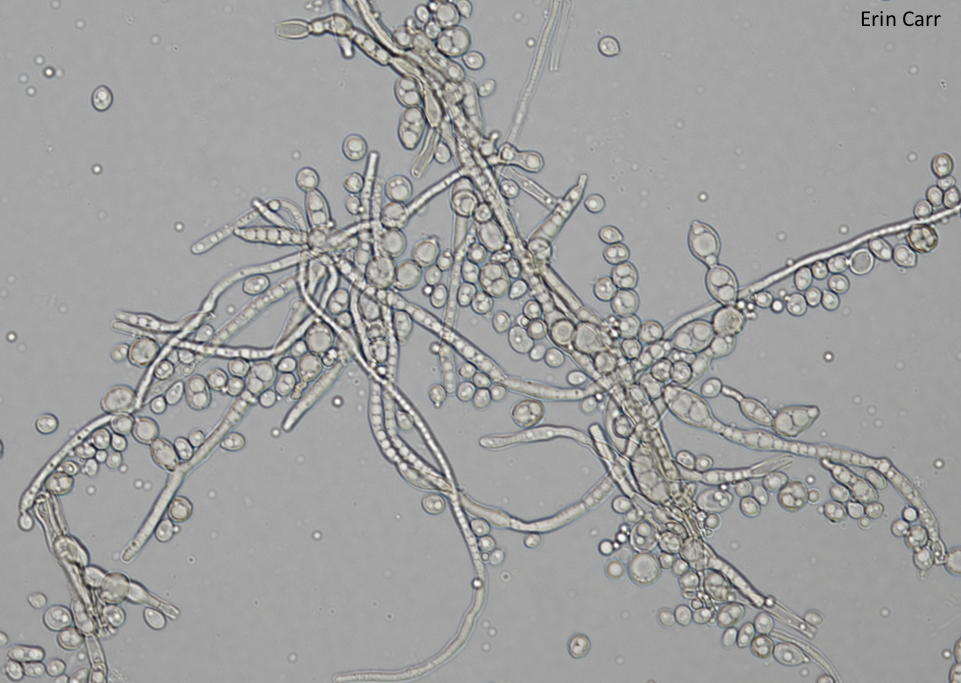

JF 06-1F Fuzzy
JF 06-1F Fuzzy is an unknown polyextremotolerant fungal culture whose highest hit in the NCBI database is Exophiala sp. isolate (MN634624.1), 98.97% matching. Polyextremotolerant fungi are named as such because of their high resistance to many stressors simultaneously, as opposed to extremophiles which live exclusively in extreme conditions (Gostinčar et al., 2012). They are also known as “black yeast fungi”, referring to their highly melanized cell wall, although not all have the yeast morphology (Gostinčar et al., 2012). This fungus was isolated as part of a broader survey of fungal-algal associations in dryland Biological Soil Crusts (BSCs) as funded by NASA’s exobiology program. It was recovered from a BSC community located in Jackman Flats Provincial Park (B.C., Canada). JF 06-1F Fuzzy is exclusively found in a hyphal form, similar to other Exophiala oligosperma isolates that are closely related to this one (Bossler et al., 2003). No teleomorphic state has yet been observed for JF 06-1F, but that is typical of black yeast fungi (Untereriner et al., 1995). Extensive phenotyping shows that this isolate can use most standard nitrogen sources to support growth, except straight agar with no additional nitrogen. It is capable of growing in most carbon sources, but is unable to grow in inostiol, ribose, or lactose. Moreover, JF 06-1F is resistant to all metals tested (Fe, Co, Ni, Cu, Cd, and Ag). JF 06-1F’s optimal growth temperature is 22°C but was also capable of growing at 27°C with almost no growth decrease. Growth at 37°C was stunted, while growth 4°C and 42°C was not observed. Since this isolate is capable of some growth at 37°C as opposed to the other isolates, it is potentially a mammal pathogen.
References:
Bossler, A. D., Richter, S. S., Chavez, A. J., Vogelgesang, S. A., Sutton, D. A., Grooters, A. M., Rinaldi, M. G., deHoog, G. S., & Pfaller, M. A. (2003). Exophiala oligosperma causing olecranon bursitis. Journal of Clinical Microbiology, 41(10), 4779-4782.
Gostinčar, C., Muggia, L., & Grube, M. (2012). Polyextremotolerant black fungi: oligotrophism, adaptive potential, and a link to lichen symbioses. Frontiers in Microbiology, 3, 390.
Untereiner, W. A., Straus, N. A., & Malloch, D. (1995). A molecular-morphotaxonomic approach to the systematics of the Herpotrichiellaceae and allied black yeasts. Mycological Research, 99(8), 897-913.
